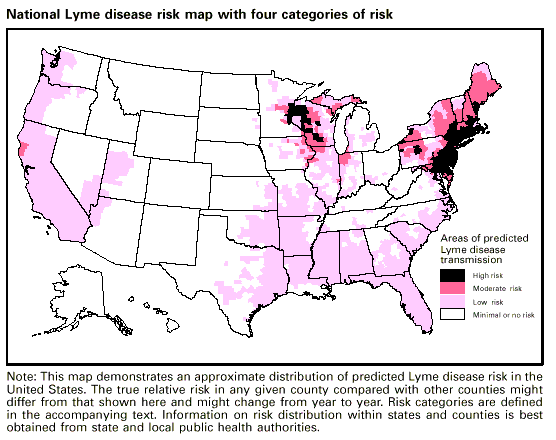The Science Behind Tick Prevention
Guest Writer: Kate Flannery
Before we start discussing the methods and the process of tick prevention and possible removal and cure, let’s be clear about how much harm this small but dangerous parasite can cause your beloved pet.

Ticks are ectoparasites that feed on an animal’s blood. These vile little organisms are found outside of the body, but they attach themselves to the skin with the mouth and glue-like substance that they produce to help them remain attached. A full grown tick has eight legs, which makes it an arachnid. Ticks can cause anemia due to the amount of blood they can suck out of an animal. Other unfortunate consequences of a tick bite include Lyme disease and various fevers, most notably Rocky Mountain spotted fever. Female ticks excrete a toxin into its mammal host that could even cause paralysis. The spot on the skin that is infected is always irritated and red, and if you don’t treat this problem in time, the tick can invade your skin as well, and cause the same conundrum. Your pet’s exposure to this problem depends on the region, country, season, and even on the amount of time they spend outside. Even a simple walk through the bushes or tall grass can hide a tick threat.

Be careful! If the tick is already on the skin, do not pull on it yourself unless you are 100% sure of what you are doing! A tick’s body parts (most notably the mouth) can get left behind during the process removal, and this segment alone is enough to cause further harm. If you are unsure of how to remove a tick from your cat, your dog, or yourself, see a vet or a doctor. If you have a spare 5 minutes right now, read up on how to remove ticks safely.
Removal of this problem may be just as harmful for your pet, so the best thing to do is to heed Cesar Milano’s (well, Erasmus Desiderius’) quote: “Prevention is better than cure.”

You can take care of your yard and garden, and basically every place in your backyard that seems potentially dangerous to you. There are environmentally safe sprays that can help you get rid of these parasites, but so long as you strictly follow the instructions and apply as recommended. If you think ticks will not survive the cold you are wrong! In fact, for most of their lifetime, ticks survive without a host, and they are as adaptable as they are dangerous. Cutting the grass regularly and cleaning leaves is a way to get rid of them. The spray will probably help you if your dog has a flea problem, too.
When it comes to your pet, you need to apply tick and flea treatments for dogs. There are products that you should use once a month, and some products should be used weekly or even more often – all the instructions are written out on the packaging, and there is no need to decide on doses yourself. In fact, you should restrain from self-medicating your dog or your lawn. Remember to consult your vet first, but mind the dog’s needs as well. Maybe a shampoo will suit your best friend better, or maybe a Frontline capsule is more agreeable to its routine. Apply these capsules on the back of the neck, and tender areas. If your pet is scared of sprays, you can always spray on a piece of cloth first, and then run it through its fur. Some people choose flea and tick collars, but keep in mind that they are only mild protection.
The last thing you need to remember is to examine your dog thoroughly after every walk. Pay extra attention if you knowingly live in a tick-infested area.
Take care of your yard, and take care of your pet and yourself. In this case, prevention and checkups are everything.
Thank you for reading, “The Science Behind Tick Prevention“
 Kate Flannery is an Aussie expat living in Serbia. She is a linguistics student and lifestyle blogger, and she spends her days at the marina with her two dogs, Butters and Belize. You can find her writing on HighStyleLife
Kate Flannery is an Aussie expat living in Serbia. She is a linguistics student and lifestyle blogger, and she spends her days at the marina with her two dogs, Butters and Belize. You can find her writing on HighStyleLife
***
The Science Behind Tick Prevention, #Dogs #DogHealth Share on X
***
A QUESTION FOR YOU:
What experiences have you had with ticks and fleas in your area so far this summer?
***
***
*** Leave a comment below and remember to share. ***
It’s just sexy!
As always, thank you for taking the time to visit my blog!


♥ PEACE ♥
- 4 Tips for Maintaining Healthy Weight for Your Cat - December 20, 2019
- 8 Amazing Benefits of CBD for Dogs and Other Pets - December 12, 2019
- Kibble or Canned Pet Food? What Should Your Pet Be Eating? - December 9, 2019


It sounds like mostly you do the same things you would for a child or yourself. Just be thorough in monitoring your pet’s condition
Great post! I hate ticks so much. I use a “tick off” to remove the ticks. It looks like a plastic measuring spoon with a slit out of it. You slide the tick into the slit and then apply pressure as you scoop the tick out. It works amazingly well and I’ve always gotten the head out.
Hey, Lauren. Nice of you to come by for a visit! I use a tool like that too, to get ticks out and it works like a charm every time. I hate those ugly, creepy things too, especially when they’re engorged. Eww. Yuck. Have a great weekend! Talk later. 🙂